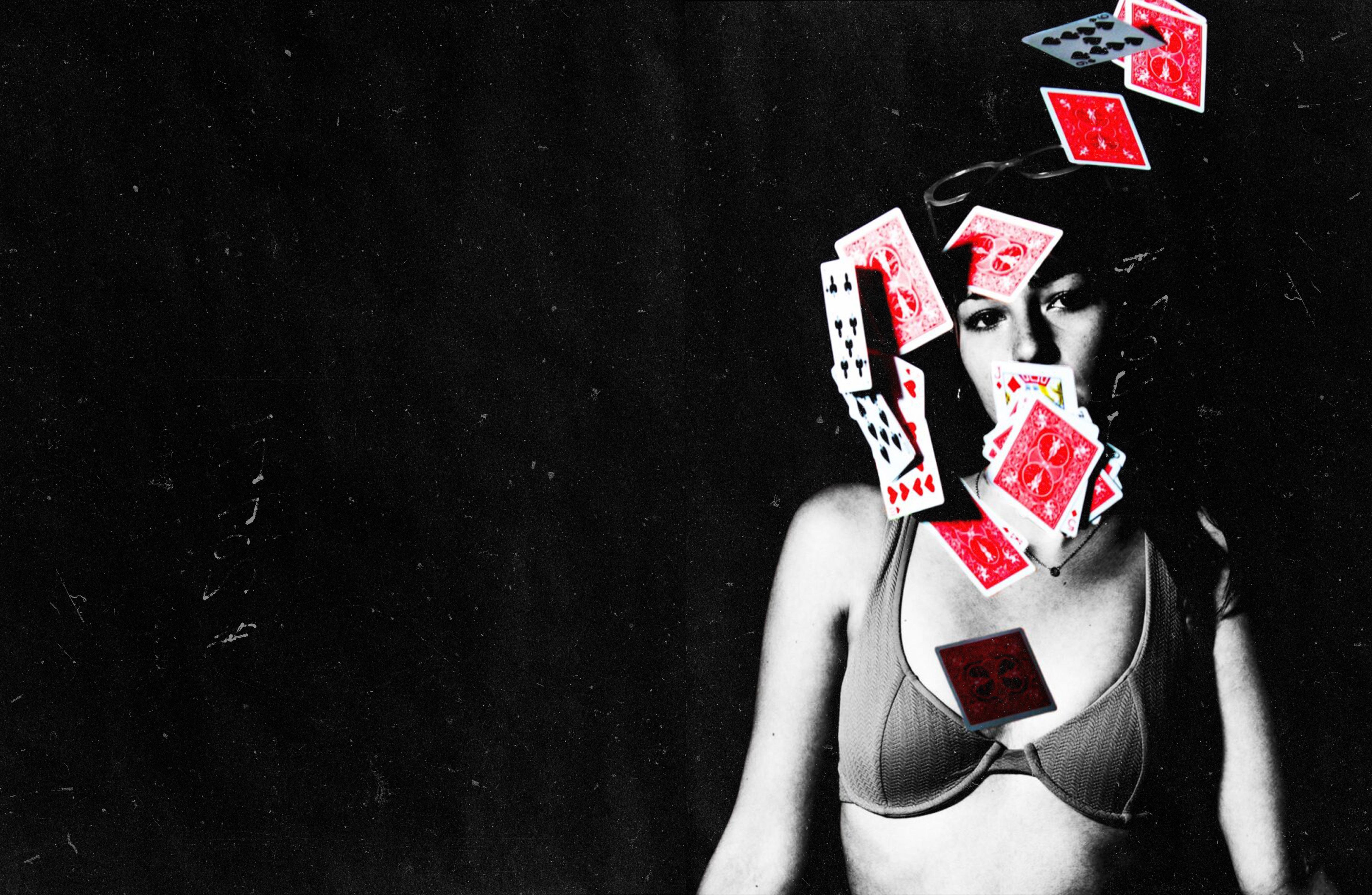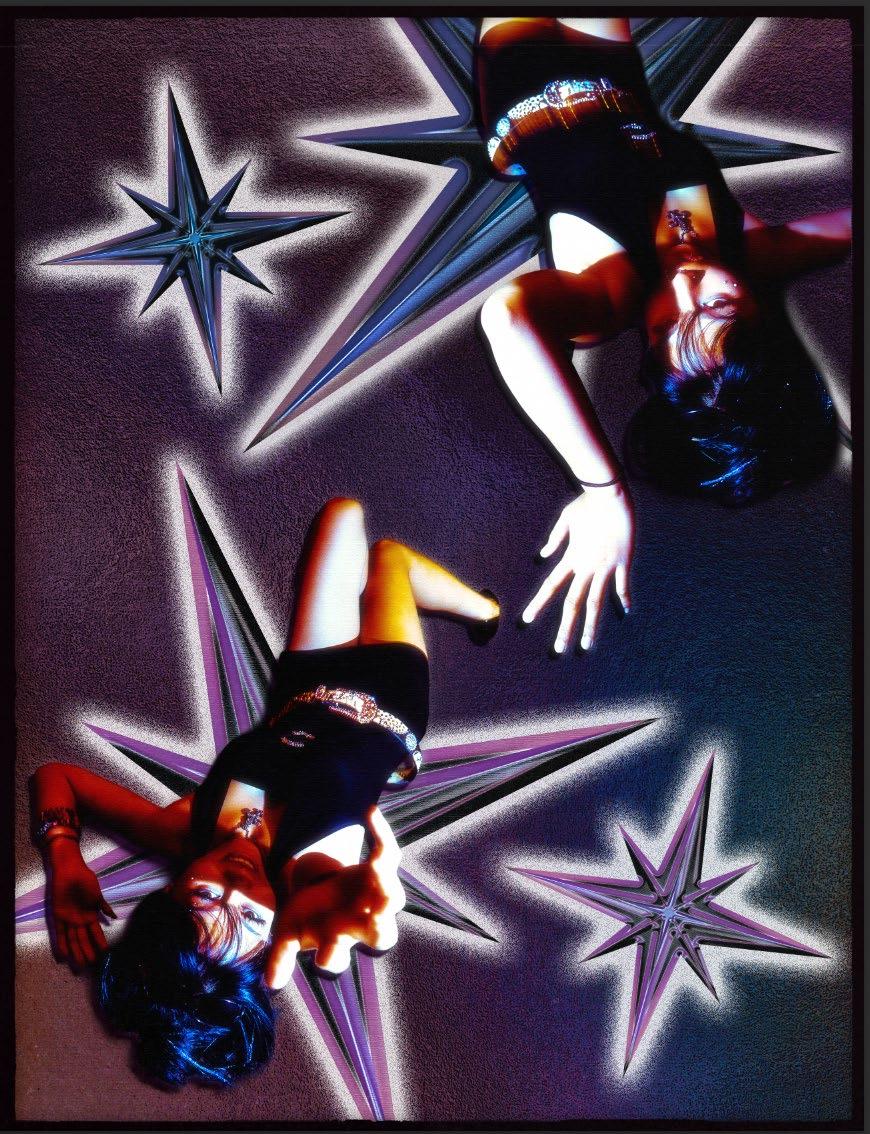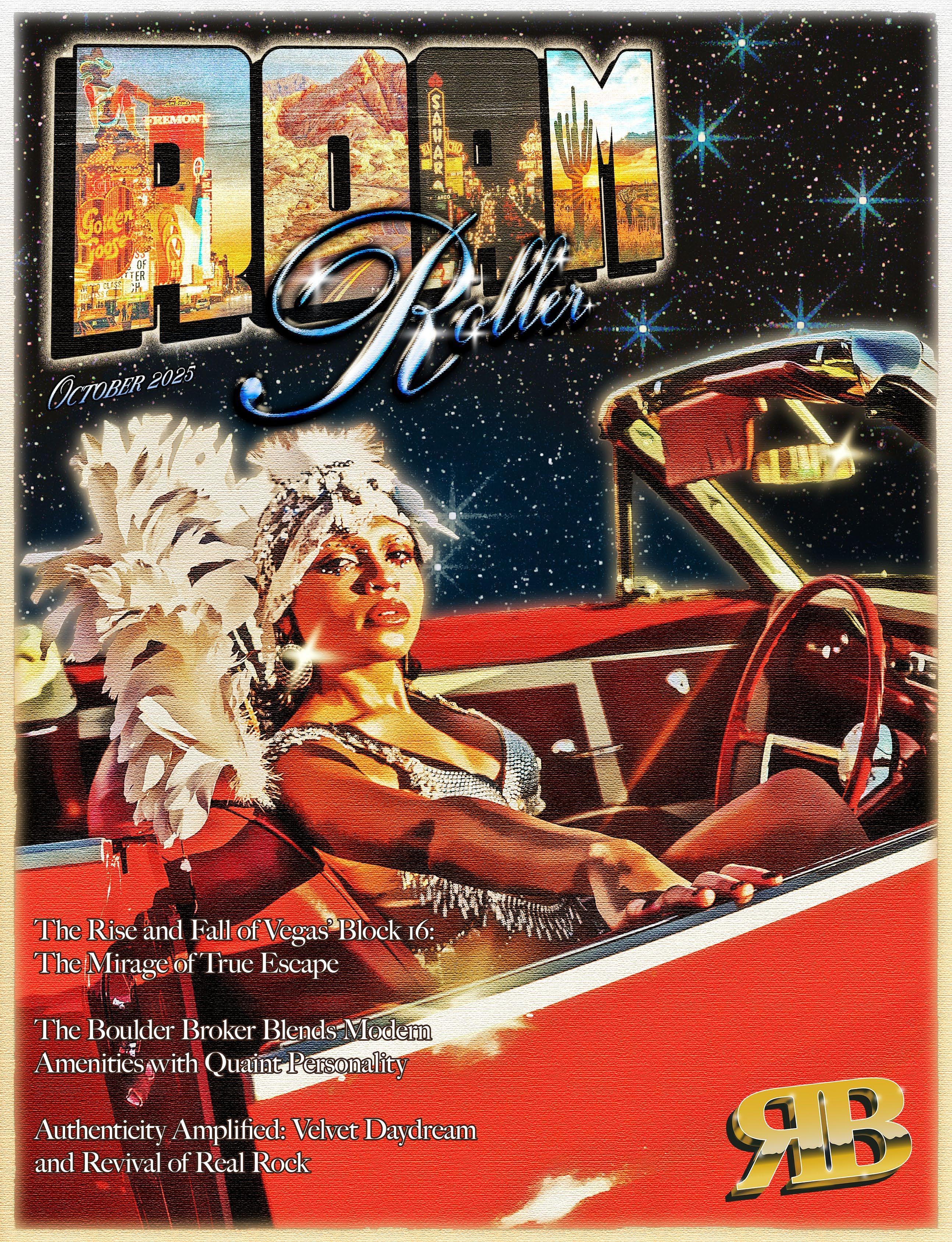



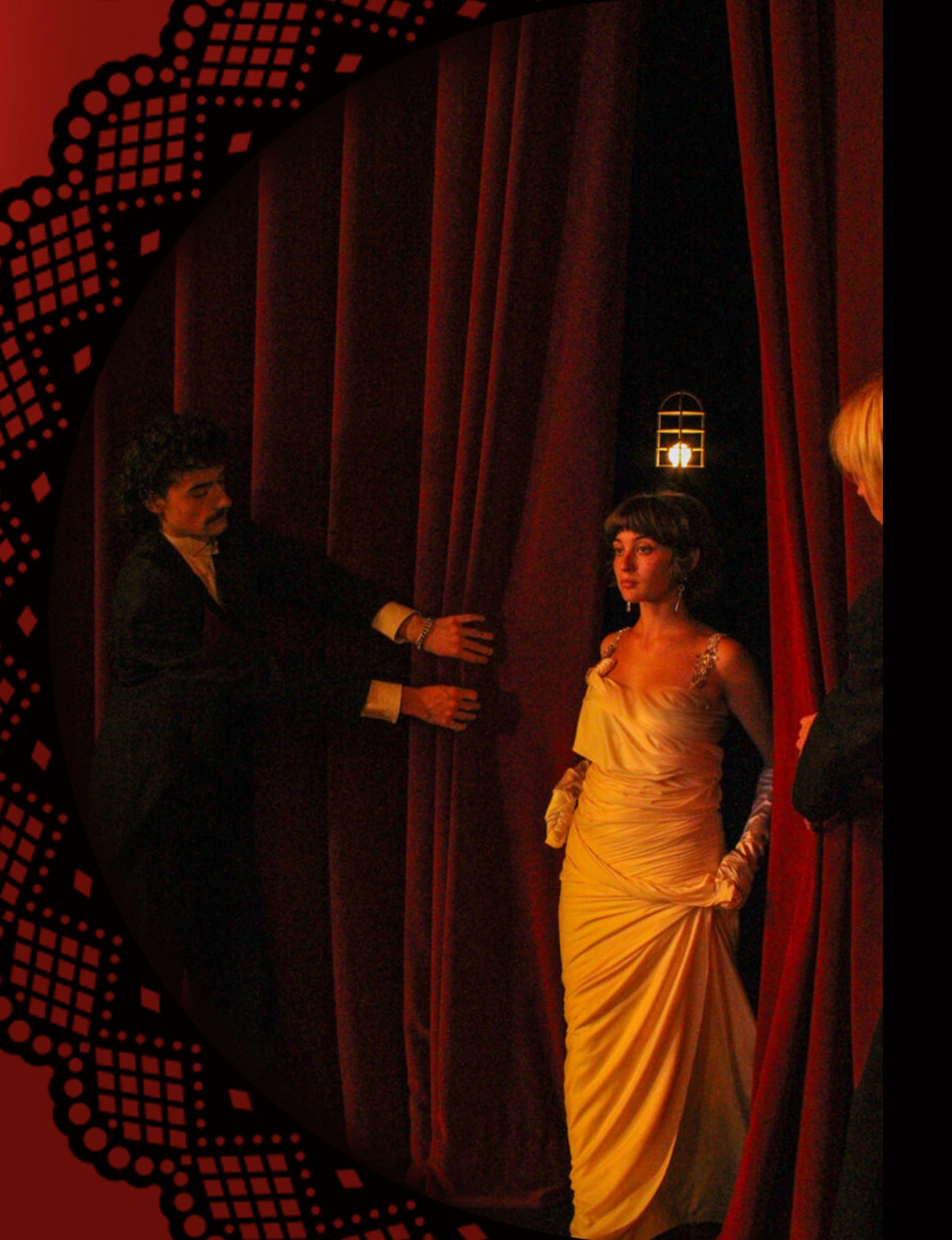




The high-rise hotels, casinos, and nightclubs all with opulent interiors created a Gatsby-like atmosphere in what used to be a seemingly ordinary town. It mimicked Hollywood glamour and made grandeur accessible, at least for the weekend. With considerable distance from just about everything, the I-15 and Route 93 became portals into the glamour that became the Vegas strip.
It was a break from societal norms, a place where it was perfectly okay, if not preferable, to act according to one’s desires. When sexuality was taboo, Vegas turned it into a performance art. Sex, gambling, drinking and the spoils of good fortune attracted people who wanted a release. Among those people were marginalized communities who looked for acceptance. Topless showgirls and East Naples Drive—also known as the “Fruit Loop” for its underground queer scene—were celebrated for sexuality and identity. People came to explore who they were, not who they were supposed to be. Before long, authenticity became the city’s trademark.
Vegas created a space for oppressed groups to claim agency in a world that denied it. Behind the glamour, it allowed people to put down their masks and wear something new: their truths.
When rebellion hit the runway
Vegas’s spirit of turning personal expression into a spectacle reemerged decades later through “statement fashion.” Designers began using clothing as protest, creating the intersection between fashion and self-expression.
Prada, a brand known for its meticulous creation of tailored suits, became a quintessential example of mixing fashion and expression. Looking back at its first calendar show in 1988, the collection was a direct criticism of Bentio Mussolini’s fascist dictatorship in Italy. After World War I, women adopted “The New Look,” characterized by shorter hair, shorter skirts and even pants. During his rise to power, Mussolini censored this style, forcing women to dress in what he and other political leaders considered Italian-made feminine attire. Comedically, this later became known as “The Fashion Police.” Prada’s collection took what Mussolini enforced and made it unflattering, which subsequently created the idea of “Ugly Chic.” Prada’s collection transformed what was once considered undesirable into power, a concept that mirrors how Vegas reclaimed what society deemed improper and celebrated it. By highlighting the beauty of the domestic worker, the collection was a subversion of what fascism meant to women.
Recently, the Ashish Gupta 2026 spring show at London Fashion Week offered its interpretation of the merging between fashion and opinion. The British-Indian designer, Ashish Gupta, creates his clothing by mixing his cultural heritage with political and social commentary. His most recent collection drew attention as the runway turned into a dance show. Gupta’s collection used movement as a form of resistance. While the show seamlessly displayed the fluidity of the garments, Gupta explained in an interview with Luke Leitch that the collection’s message went beyond aesthetics.
“We’re not going to be sad about this shit, we’re going to fight,” he said, offering his own critique of policy in the United Kingdom. Fittingly, during the show, Gupta was backstage wearing a “Fashion Not Fascism” T-shirt. Gupta turned performance into protest. He used design to remind audiences that fashion, movement and resistance belong in the spotlight.
An Ode to “The Statement Piece”
Across the industry, fashion continues to remain a platform for people’s voices. Alexandria Ocasio-Cortez’s “Tax the rich” gown at the 2021 Met Gala, or Bella Hadid’s support of Palestinian designers’ echoes the cultural spectacle Vegas helped pioneer.
Guided by house codes and consumer trends, it has become increasingly difficult for designers to deviate from trend analysts’s predictions. Even though pressure to design for profit grows, many modern brands have begun taking public stances on social and cultural issues.
Conner Ives closed out his Fall 2025 collection wearing a “Protect The Dolls” T-shirt; it later raised around $1 million for the Trans Lifeline charity. Similarly, Dior’s spring/summer 2017 show debuted its infamous “We Should All Be Feminists” shirt. The shirt was in support of the “Me Too” movement defined by online activism and protests against the sexualization and subjugation of women. The shirt held particular resonance, having been created by Dior’s first female designer, Maria Grazia Chiuri. Vegas’s contribution to fashion laid the groundwork for these movements where clothing became a medium for protest and social commentary within the fashion industry.
Each of these moments channel the disobedience and performance that once defined the Vegas Strip. Vegas fashion cannot be credited for every opinion-inspired show or design, but it set the stage for people developing their identities in a world where conformity was expected. Among its blinding opulence, it gave a spotlight to those who needed it the most and continues to spark similar movements.








Step one foot onto The Strip, the flashy, mega-energetic heart of Las Vegas, and you’ll be sure to encounter attractions like casino signs and psychic readings, all vending daydreams and escape. Yet how readily can we rely on these spectacles— and ourselves—to secure our wildest fantasies, much less our fortunes?
Founded as a small railroad town in 1905, Vegas has always embodied risk. A section of the city was openly designated for illicit activity that same year by the local government, looking to bring in extra revenue during the Great Depression; they managed vice closely, based on financial gain. Block 16 quickly became a hotspot for workers living in Boulder City, Nevada, where gambling, alcohol and prostitution were all prohibited. Therefore, they could find nearby vices only within the Block’s promising borders. This culminated in law-abiding American workers being promised nights of liberation in the Block’s own little world, where they could indulge in something new and audacious.
Brothels appeared inside, behind and above bars. This idea of combined vices—and a complete surrender to freedom and overindulgence— drew many in. Business was plentiful for years; though prohibition laws came and went, bars were only encouraged to maximize profits through prostitution. However, the Block’s success couldn’t last forever, and the 1940s saw the downfall of what it had successfully promoted for nearly two decades.
The expanding and modernizing resort city had begun to express complaints about these bar brothels, which were inappropriate alongside the new domestic resorts and residences built to attract families to the area during World War II’s urban migration. There was a surge in the popularity of a clean-cut Vegas, stemming from what lawmakers knew would generate revenue and complement a changing America. Block 16 held on until 1954, when one of its last bar brothels, Roxie’s, was raided. Roxie’s and the remaining brothels were deemed unfit for renovation and torn down shortly after.
Today, Las Vegas attempts to emulate its early ideals, selling its visitors a fantastically hedonistic idea: Sin City, the thrill of consuming beyond one’s means with digital gambling and flashy clubs. Casino owners recognize their audiences’ hopes and limitations, responding with the lure of risk and getaway from the routines and responsibilities that structure our lives. However, these enterprises, as components of larger institutions, impose strict stipulations— they only condone what will keep their monopolies on top. Not everything goes, and wild brothels are products of the past.
A close look at the origins of Block 16 strikes similarity; its city owners only justified bar brothels based on income and social trends. This exemplifies that although escape is timeless, it is destined to be determined by patterns of human insecurity, illusion and wealth in a volatile world built around consumerism. This commercialism is twofold: predetermined by monetization, but also made uncertain by trends influencing it. Though we can expect the presence of these systems and coexist with them, it’s much more difficult to find true autonomy within them. Block 16’s story exemplifies that capitalism ultimately molds our capabilities, illuminating the paradox of human excess. We consume to exercise independence and feel liberated, only to eventually run back to the calculated systems that benefit from this consumption.
Block 16 exists today as the remains of Las Vegas’ red lights district, and as large as a parking lot—a small, grey pinprick amid the city’s decadence and spectacle. Though today’s Vegas doesn’t appear to share the Block’s misfortune, both versions of the city illustrate the necessity of seeing escape for what it is and holding fast to our identities as we navigate an uncertain world.
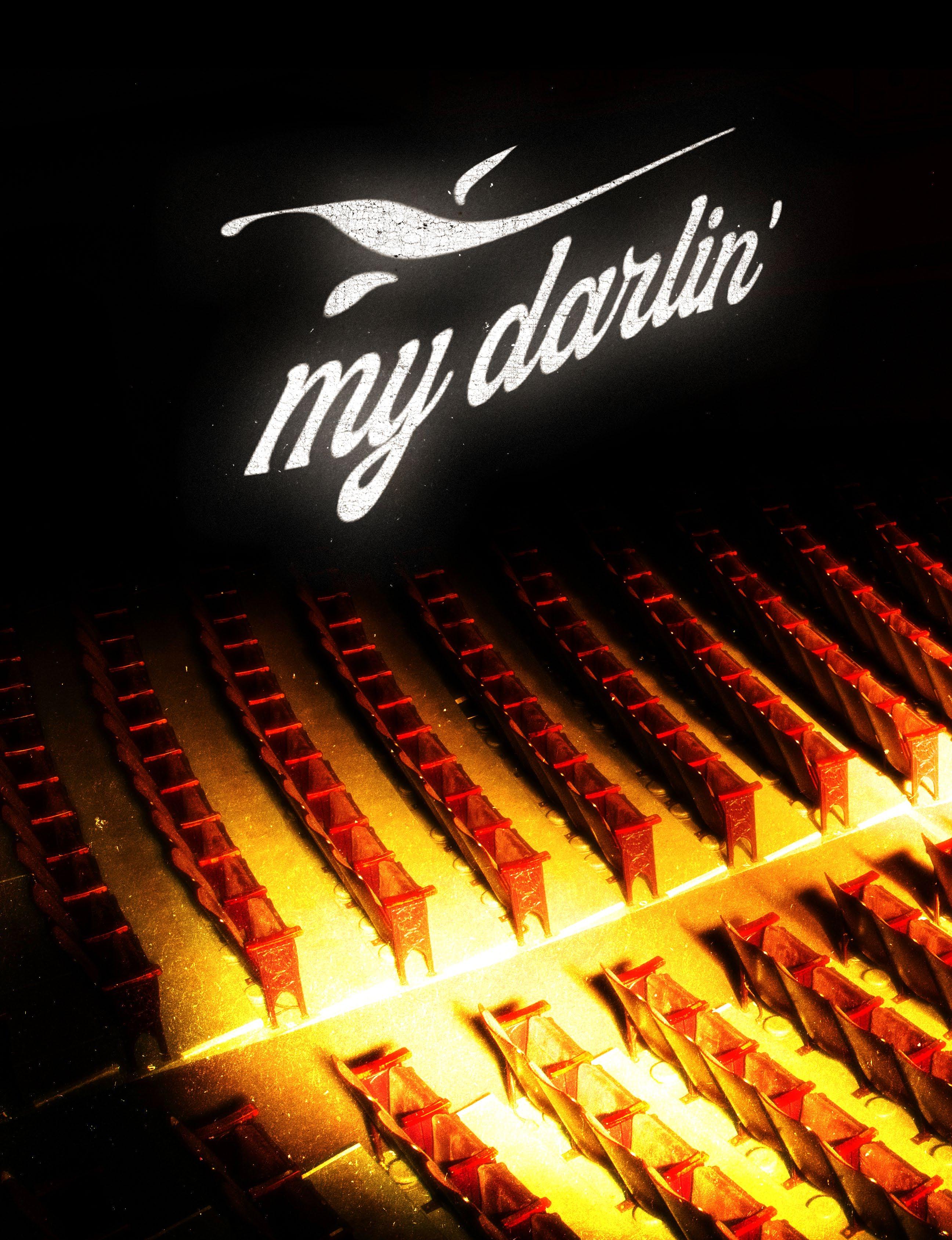


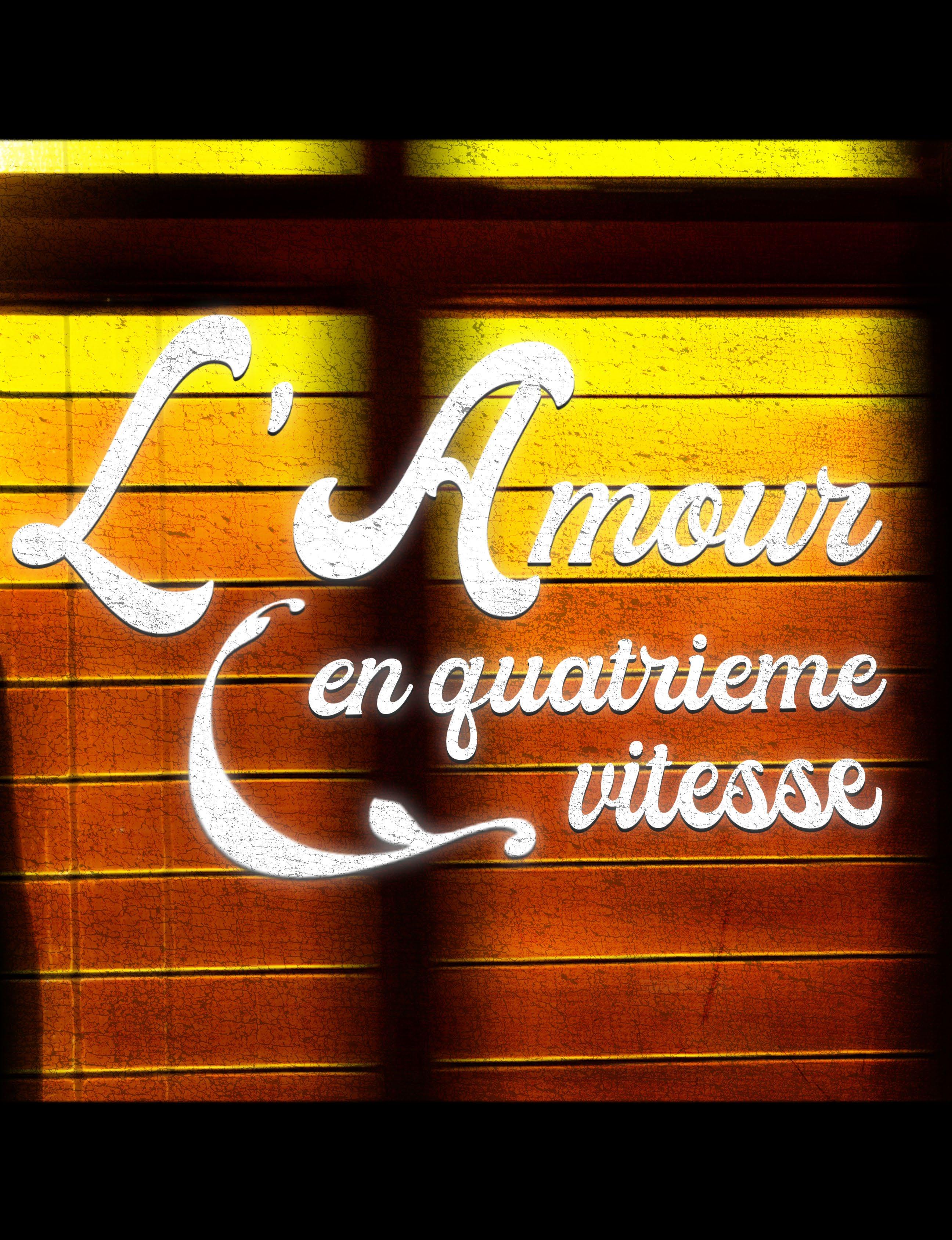
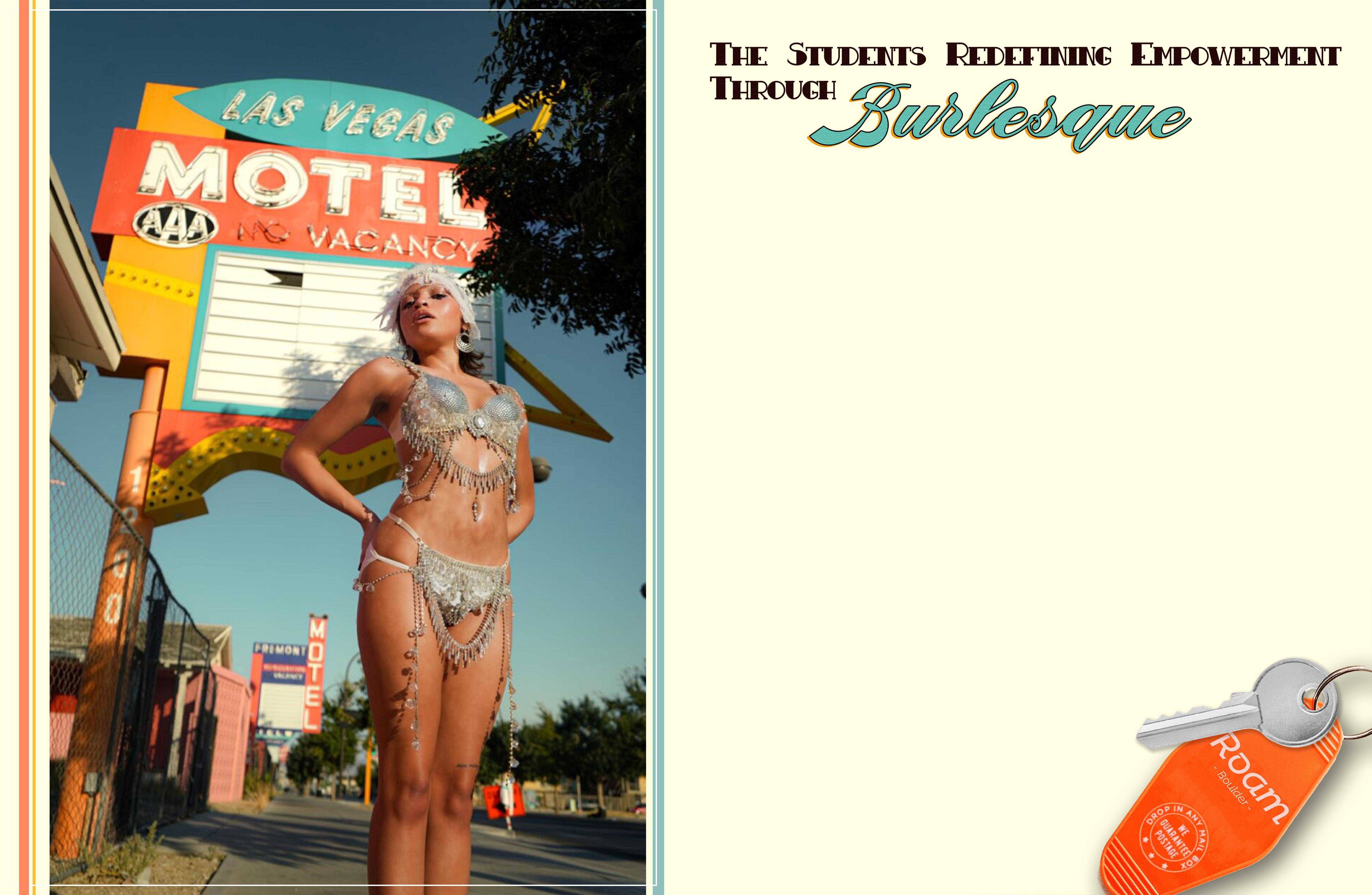
By Hayden Chedid

Under the soft glow of studio lights, mirrors that once reflected judgment now shimmer with power. Music pulses through the floor as bodies begin to move—not to please an audience, but to belong wholly to the moment. Here, students shed perfectionism for power and insecurity for self-celebration. This is University of Colorado Boulder’s Burlesque Club, where movement becomes rebellion and confidence is learned one beat at a time. For president Riley Schvimmer, a senior at CU Boulder, burlesque is more than performance art—it’s liberation.
“It welcomed me with open arms and allowed me to fully express my sexuality through dance, without feeling any scrutiny,” she said. “When we’re on that stage, there’s no judgment. It’s just us and the music.” Founded on the principles of body positivity, inclusivity and self-love, CU Burlesque is open to all students—no dance experience necessary. It’s a club where confidence isn’t a prerequisite; it’s what you leave with. The group’s mission statement reads like a love letter to individuality: Everyone is welcome here. And for many, that invitation changes everything.
More Than Glitter and Glamour
Burlesque has long carried the imagery of feathers, corsets and vintage showgirls—but Schvimmer is quick to clarify that what happens on stage today runs far deeper. “People misunderstand how inherently political burlesque is,” she said. “Yes, part of it is the glitz and glamour of a Vegas showgirl, but it’s also extremely vulnerable and emotional, especially within the queer community. People put their entire identity out on that stage, scars and all.” For CU’s performers, burlesque isn’t just art—it’s activism. “Queer communities are so often told, ‘Don’t show yourself, don’t stand out,’” Schvimmer said. “Burlesque is where we knock that down.” The club’s performances range from playful to powerful, exploring everything from heartbreak and mental health to political injustice. “It can be anything you can possibly imagine,” she added. “It’s about finding beauty and freedom in discomfort.”
Building a Brave Space
That vulnerability is also what makes CU Burlesque’s community so strong. “Because it’s such a vulnerable art form, you have to trust those around you to support you without judgment,” Schvimmer said. That trust transforms into friendship—and often, transformation. “I’ve seen countless members go from scared to participate to being unapologetically themselves, front and center on stage,” she says. “It’s a beautiful thing to witness.” The club’s weekly workshops, held throughout the school year, are a cornerstone of that community. Each begins with a moment of reflection—what Schvimmer calls “circle time”—where members check in with their emotions and set intentions. Those workshops lead up to the club’s spring showcase, where every member who wants to perform gets cast. The show brings together a collage of styles and stories— from classic burlesque numbers to conceptual performances that channel personal and political emotion. “It’s always the most amazing time,” Schvimmer said. “We celebrate everyone’s journey.”
Performing With Purpose
But creating space for this kind of expression hasn’t always been easy. The club has faced backlash on campus, even being banned from rehearsal spaces for performances that challenged comfort zones. Yet Schvimmer and her peers refuse to shrink back. “Burlesque represents an endless fight against anyone who tries to suppress the queer community,” she said. “It gives our members a platform to express how they feel about various events, policies and people.” For Schvimmer, that fight is deeply personal—and deeply joyful. “Being part of this community means the world to me,” she said. “It’s magical to feel free to fully express yourself, and it’s incredibly beautiful to watch others find that for themselves. ”As CU Burlesque continues to grow, Schvimmer hopes one thing will change: visibility. “I wish people just knew we existed,” she said. “So many people tell us, ‘I wish I found you sooner.’ We’re here, waiting for you with open and loving arms.” From the first tentative step to the final flourish on stage, CU Boulder’s Burlesque Club transforms hesitation into boldness. Students find freedom not just in movement, but in the courage to show up, again and again, exactly as they are.
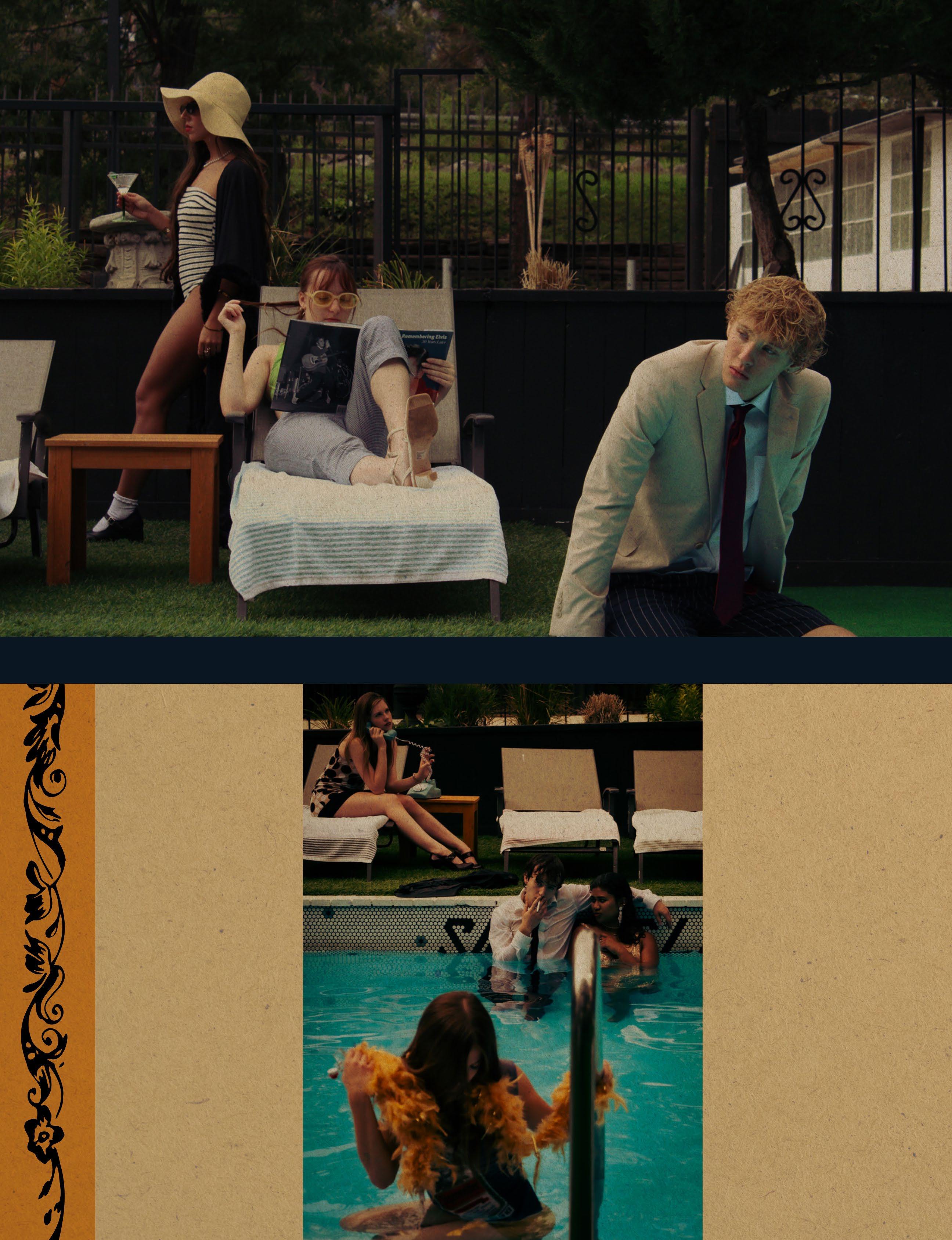

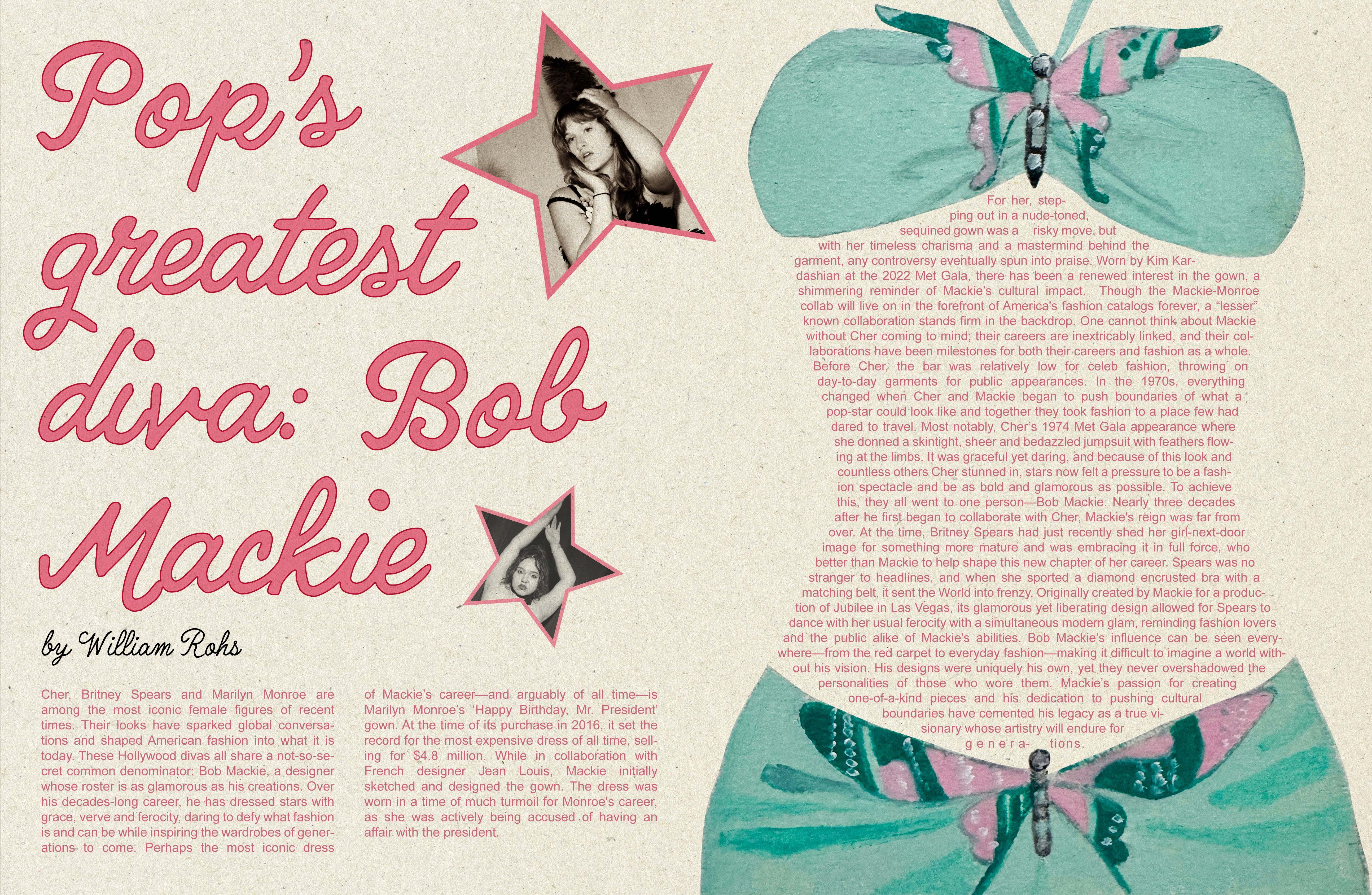

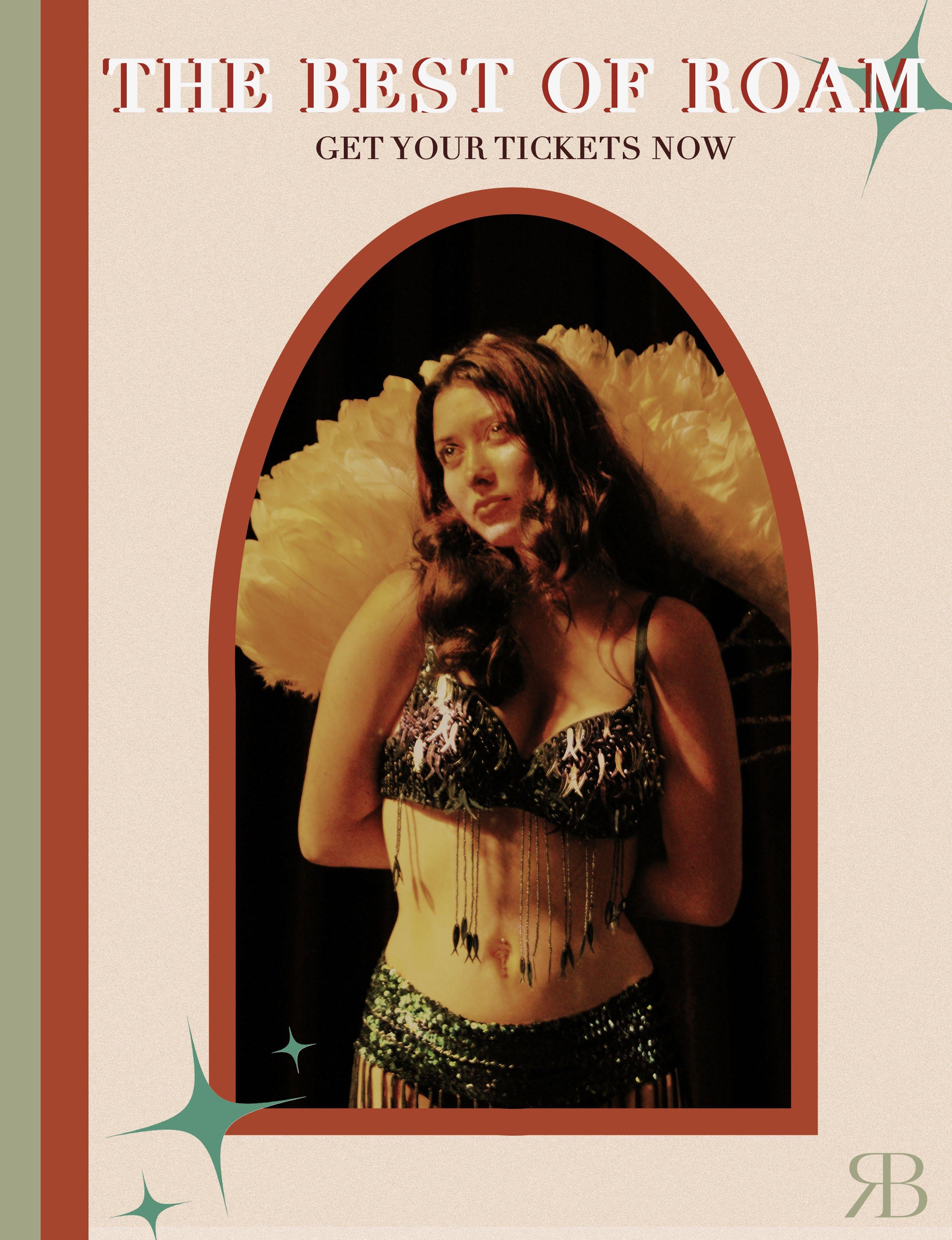
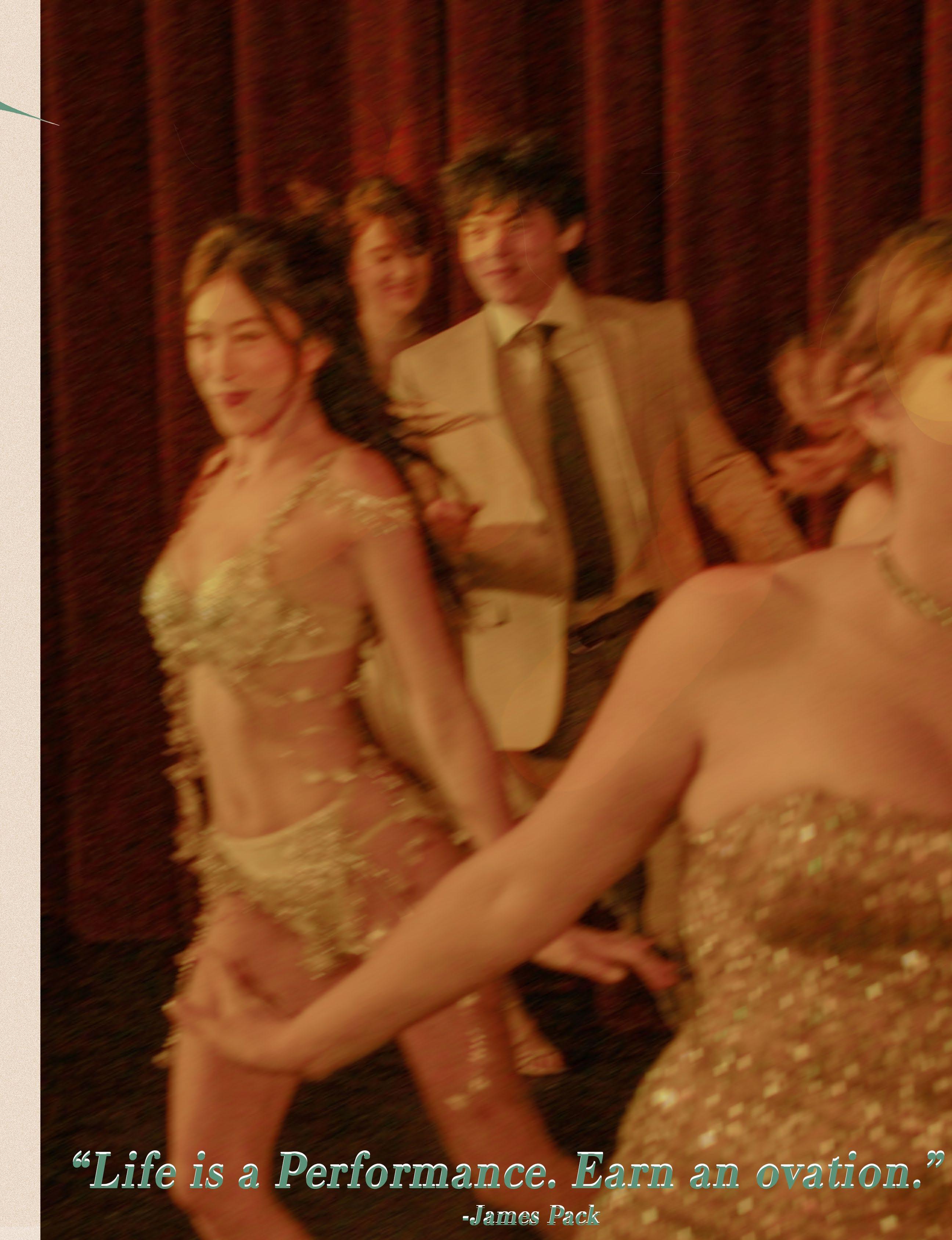




At 21 years old, Persephone Johanna is making a name for herself in Boulder’s creative scene. With a background in modeling, fashion and even exotic dancing, she isn’t afraid to let go and explore her own creativity. However, Persephone’s penchance for artistry isn’t just limited to herself.
As the sole employee of ChuChu Boutique over the summer, Persephone was given the creative freedom to do what she could to help the brand. Encouraged by her boyfriend’s mother, who knows ChuChu personally, she decided to advertise on social media. What Persephone didn’t expect was the amount of traction her efforts would gain the Boutique.
Now located in Arvada, ChuChu Boutique was originally an online business that started pre-pandemic. ChuChu’s efforts to open an in-person boutique were halted, but she didn’t let that stop her dream. A woman of many connections, ChuChu is very influential in the fashion industry. Her and her husband also host psychedelic ceremonies, which attract a diverse crowd, including celebrities.
After a viral tiktok for the Boutique gained lots of attention, the stage was set for Burning Man, where the rest of the items at ChuChu’s were given away, in preparation for their temporary move to Santa Fe. “It’s cool to see how far she’s come,” Persephone said.
She looks fondly on her experience with ChuChu. Although it came with many stresses and a new sense of responsibility, Persephone highlights that she met lots of interesting people and gained many new connections in the fashion world. Her time there helped her grow “a sense of confidence,” which showed her she could achieve whatever she put her mind to.
Her parents are both involved in the fashion industry, getting Persephone involved at a young age. Having been modeling from the age of eight, it’s no wonder that fashion holds a deep sense of connection and motivation for her. She recalls fond memories of a photoshoot where wings were edited on her back, which drove her interest in modeling.
Boulder had a special influence on her creativity. As a member of a private school, Persephone didn’t have a dress code, which allowed her to experiment with clothing without barriers. It also surrounded her with other expressive individuals, who inspired her to show off her sense of style.
Outside of ChuChu Boutique, Persephone has her own ambitious goals, which are already getting her involved in the community. She runs a vampire book club (@vampirebookclub.boulder), where they do movie nights and read gothic books. Persephone also started a fashion ‘zine (@superstitchzine), which she hopes to continue to grow.
Persephone is driven by her time spent at local punk shows. Surrounded by well-dressed people, she’s hit with creative inspiration. She helps interview people for their outfits and film the shows, inspiring the birth of her ‘zine and her other artistic ventures. Persephone credits her incredible group of friends, who push one another and drive each other’s ideas, adding that they “snowball from there.”
One thing that is for certain is the influence the fashion world has had on Persephone—through her professional prospects and wider community, she’s been brought closer to her goals. Pursuing her dreams is no easy feat, but Persephone is getting there with the help of those around her. We wish her the best of luck!





